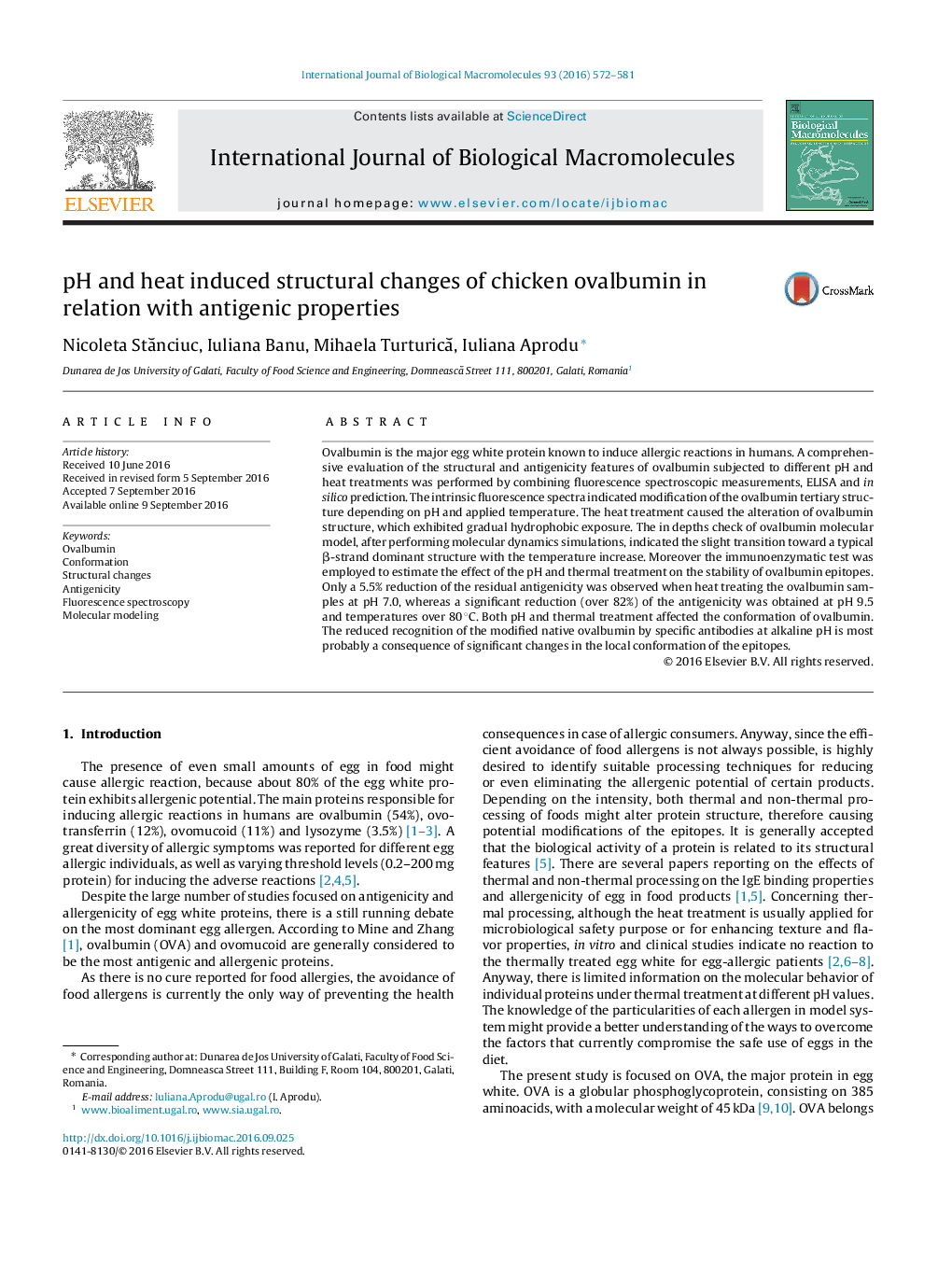| Article ID | Journal | Published Year | Pages | File Type |
|---|---|---|---|---|
| 6481678 | International Journal of Biological Macromolecules | 2016 | 10 Pages |
Ovalbumin is the major egg white protein known to induce allergic reactions in humans. A comprehensive evaluation of the structural and antigenicity features of ovalbumin subjected to different pH and heat treatments was performed by combining fluorescence spectroscopic measurements, ELISA and in silico prediction. The intrinsic fluorescence spectra indicated modification of the ovalbumin tertiary structure depending on pH and applied temperature. The heat treatment caused the alteration of ovalbumin structure, which exhibited gradual hydrophobic exposure. The in depths check of ovalbumin molecular model, after performing molecular dynamics simulations, indicated the slight transition toward a typical β-strand dominant structure with the temperature increase. Moreover the immunoenzymatic test was employed to estimate the effect of the pH and thermal treatment on the stability of ovalbumin epitopes. Only a 5.5% reduction of the residual antigenicity was observed when heat treating the ovalbumin samples at pH 7.0, whereas a significant reduction (over 82%) of the antigenicity was obtained at pH 9.5 and temperatures over 80 °C. Both pH and thermal treatment affected the conformation of ovalbumin. The reduced recognition of the modified native ovalbumin by specific antibodies at alkaline pH is most probably a consequence of significant changes in the local conformation of the epitopes.
